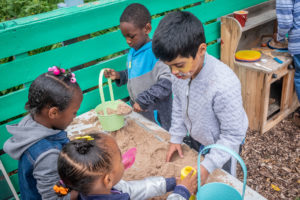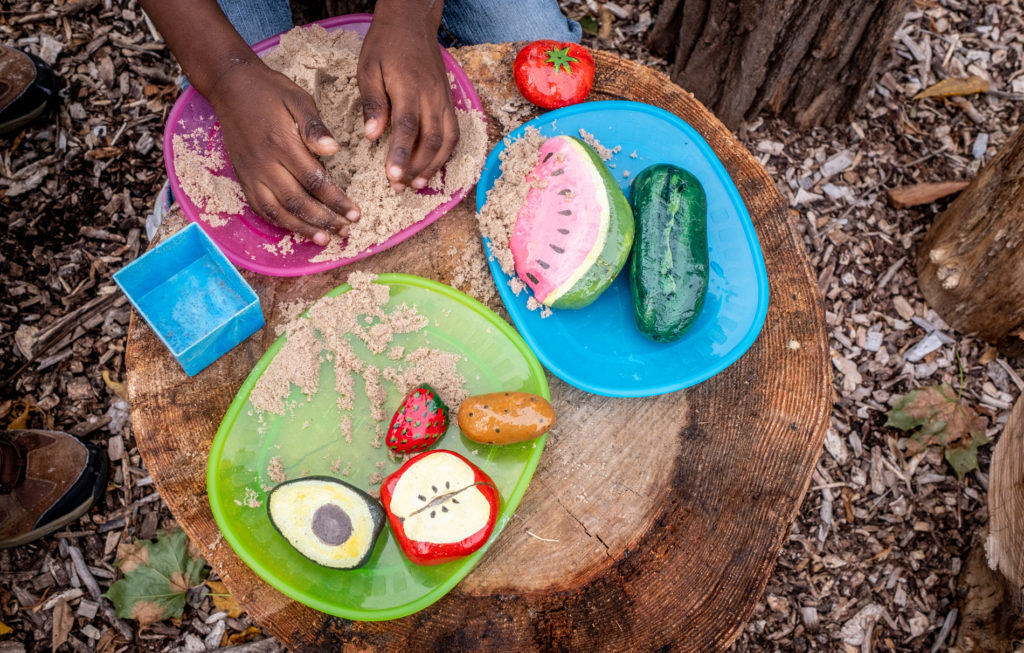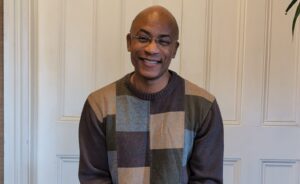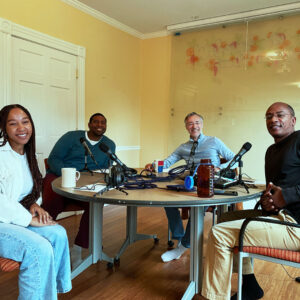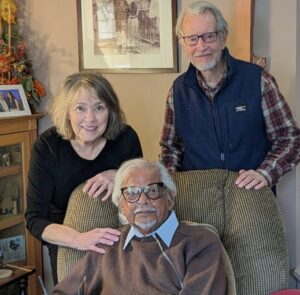Every year, we focus on making our annual Gandhi Institute open house a family-friendly event, with plenty to do for visitors of all ages. This year, we were lucky enough to offer our youngest guests something extra special. In addition to our standard face painting, magic, and sidewalk chalk, we debuted our brand new playground.
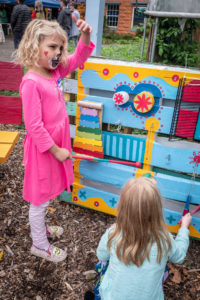
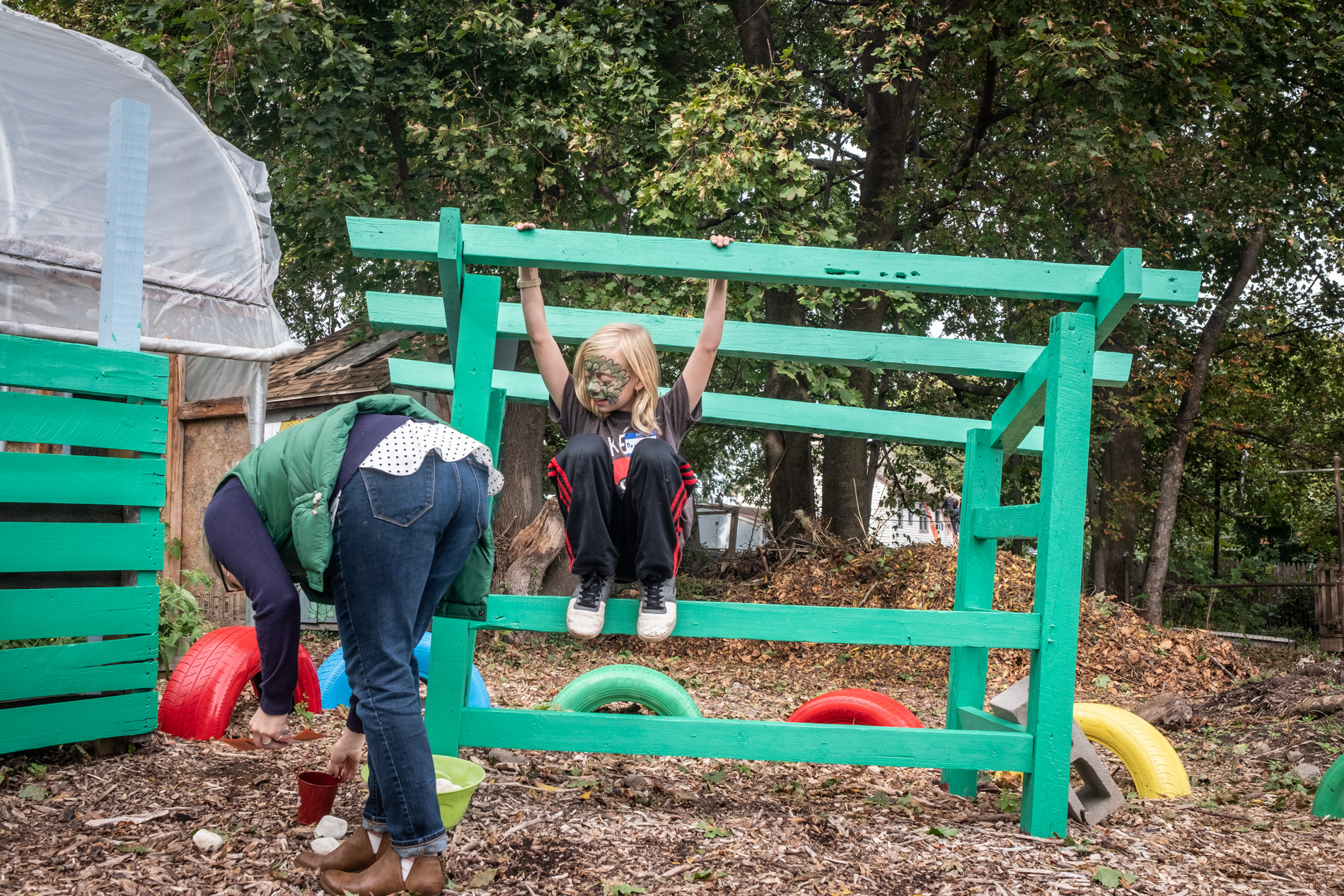
This colorful oasis in our garden — which features a play kitchen, music wall, and sand-sifting station — has been in the works for nearly two years. After considerable planning, materials gathering, and a few minor setbacks, a small group of us came together this past summer to craft a space we hope will be well-used by local youth for many years to come. Based on the reception at September’s open house, I have a feeling our chances are good.
As someone who has long loved creating play spaces (growing up, my family’s garage was turned into a makeshift arcade, our horse trailer became a kids-only hideout, and the cushions and blankets that adorned our home were routinely used as construction materials), I was thrilled when our director Kit approached me about creating a mini playground at the Gandhi Institute.
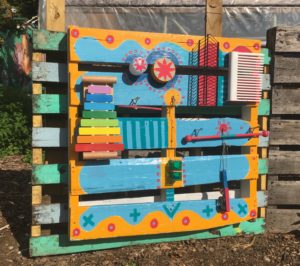
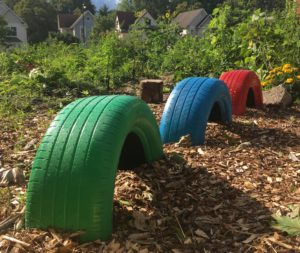
I had first discovered the amazing potential of playgrounds during my semester abroad in college when I joined a local group of students looking to refurbish a worn down public playground and present a needs assessment to city officials in Khon Kaen, Thailand. I took on the job of researching how to make the space more inviting to the area’s diverse population and foster community among different groups. It was around this same time that I was introduced to the field of placemaking — a collaborative process of reimagining public spaces to best serve the community as a whole and strengthen connections between neighbors. As a cultural anthropology student, the idea that there is an important, meaningful relationship between humans, social interaction, and space was fascinating to me. As a social justice advocate, the idea that spaces can be cultivated to benefit humans and improve social equity was inspiring. While placemaking is often associated with public squares, green spaces, and even sidewalks, I quickly learned that playgrounds have their own unique capacity to transform space.
As I’ve grown more connected to the urban planning and design world in recent years, I’ve become familiar with the phrase “if it works for kids, it will work for everyone else.” The idea is that if a space is safe, inviting, and fun for children (one of the most vulnerable demographics) it’s bound to be safe, inviting, and fun for adults. Add this to the fact that children usually have the natural effect of bringing people together — when they get together, so must the adults they’re attached to — and the importance of child-centered spaces like playgrounds is hard to ignore. And that’s without even considering the importance of play itself to child development and the ways that outdoor playgrounds foster teamwork, curiosity, connections with nature, creativity, and self reliance — crucial skills kids take with them into adulthood.
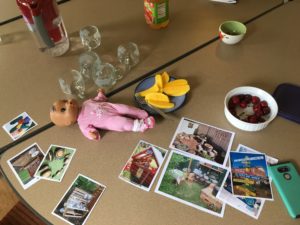
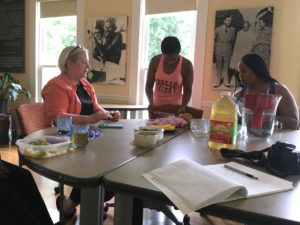
This is just as true in the US as it is in Thailand, particularly in a place like the Plymouth-Exchange neighborhood, a “play desert” where kids and parents have virtually nowhere to go for active, outdoor play. For the last eight years, we’ve tried to alleviate the limited access to fresh, healthy produce in PLEX by providing an organic vegetable garden. The decision to create a playground on our campus came when we realized that we could also do something about our neighbors’ limited access to play. And so, the process of dreaming up a nonviolent playground began.
Equipped with the placemakers perspective I’d gained in Khon Kaen, I began to think about how I could also incorporate my new identity as a nonviolence advocate into our design. Fortunately, these two outlooks have a lot of overlap. Using natural and recycled materials, for instance, is both a great way to utilize local resources and promote community participation, as well as a sustainable practice that takes the environmental impact into consideration. Likewise, creating public spaces for people to come together increases understanding, trust, and communication among community members, all of which are effective deterrents to violence.
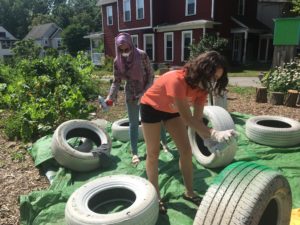
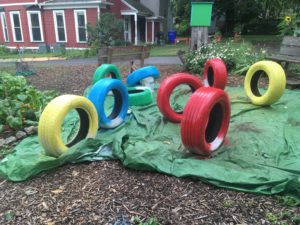
After several months of brainstorming and research (shout out to the incredible open-source website playgroundideas.org), the concept of an outdoor kids’ kitchen began to materialize. Not only would the theme tie into the rest of our outdoor space — where kids can actually see where food comes from — but it would theoretically encourage imaginative play and the incorporation of natural materials.
I printed out pictures of designs I liked, made sketches, hosted a mini focus group with kids and parents for feedback, and eventually landed on a finalized design that would be interactive, colorful, and crafted primarily from recycled materials. I headed to Craig’s List to find free tires and pallets, our wonderful artist friend Jill Gussow secured some donated paint, and with the help of staff, interns, and volunteers, we got to work.

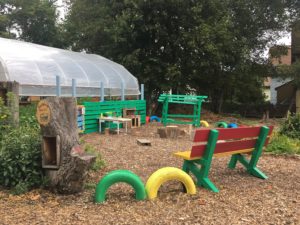
The empty space in our garden beside our greenhouse has been transformed into a space where kids are free to frolic, with plenty of benches to accommodate their guardians. The beautiful music wall and sand sifting table (crafted entirely by Jill) are particularly popular attractions, as are the colorful tires that function as both a border around the space to keep little ones contained as well as a climbing element for older kids. Neighbors are starting to visit us more regularly — it’s such a thrill to arrive at the Institute on Monday mornings to find our containers and rock foods rearranged in the playground, a sure sign someone’s been playing there over the weekend. The community Facebook group Positively Southwest Rochester even made a picture of our playground their cover photo, encouraging local folks to stop by and check it out.
While the space still has quite a lot of unrealized potential (we hope to add more interactive elements next year), it’s incredible to see the many benefits it’s already contributed. Most notable to me, is that now, when we host events like our open house and community dinners, kids have a place to congregate and channel their energy, allowing their parents the choice of either joining in the fun or mingling with the other adults. No matter what, the playground is helping to facilitate human connection — among kids, among adults, or between children and their parents. Knowing that human connection and understanding is at the root of so many good things, including nonviolence, I couldn’t be happier with the play-full place we’ve made.

